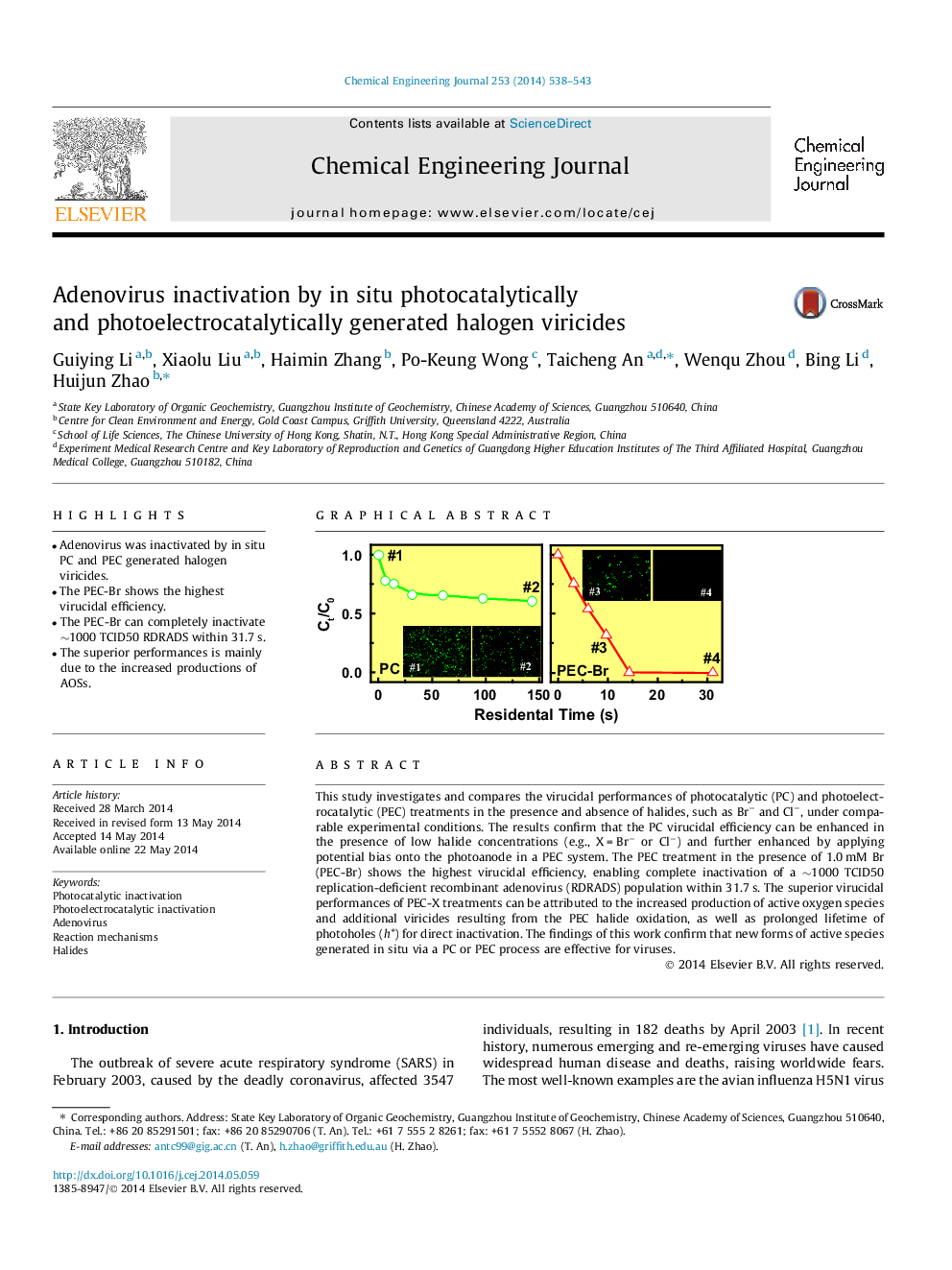| کد مقاله | کد نشریه | سال انتشار | مقاله انگلیسی | نسخه تمام متن |
|---|---|---|---|---|
| 147210 | 456387 | 2014 | 6 صفحه PDF | دانلود رایگان |
• Adenovirus was inactivated by in situ PC and PEC generated halogen viricides.
• The PEC-Br shows the highest virucidal efficiency.
• The PEC-Br can completely inactivate ∼1000 TCID50 RDRADS within 31.7 s.
• The superior performances is mainly due to the increased productions of AOSs.
This study investigates and compares the virucidal performances of photocatalytic (PC) and photoelectrocatalytic (PEC) treatments in the presence and absence of halides, such as Br− and Cl−, under comparable experimental conditions. The results confirm that the PC virucidal efficiency can be enhanced in the presence of low halide concentrations (e.g., X = Br− or Cl−) and further enhanced by applying potential bias onto the photoanode in a PEC system. The PEC treatment in the presence of 1.0 mM Br (PEC-Br) shows the highest virucidal efficiency, enabling complete inactivation of a ∼1000 TCID50 replication-deficient recombinant adenovirus (RDRADS) population within 31.7 s. The superior virucidal performances of PEC-X treatments can be attributed to the increased production of active oxygen species and additional viricides resulting from the PEC halide oxidation, as well as prolonged lifetime of photoholes (h+) for direct inactivation. The findings of this work confirm that new forms of active species generated in situ via a PC or PEC process are effective for viruses.
Figure optionsDownload as PowerPoint slide
Journal: Chemical Engineering Journal - Volume 253, 1 October 2014, Pages 538–543
